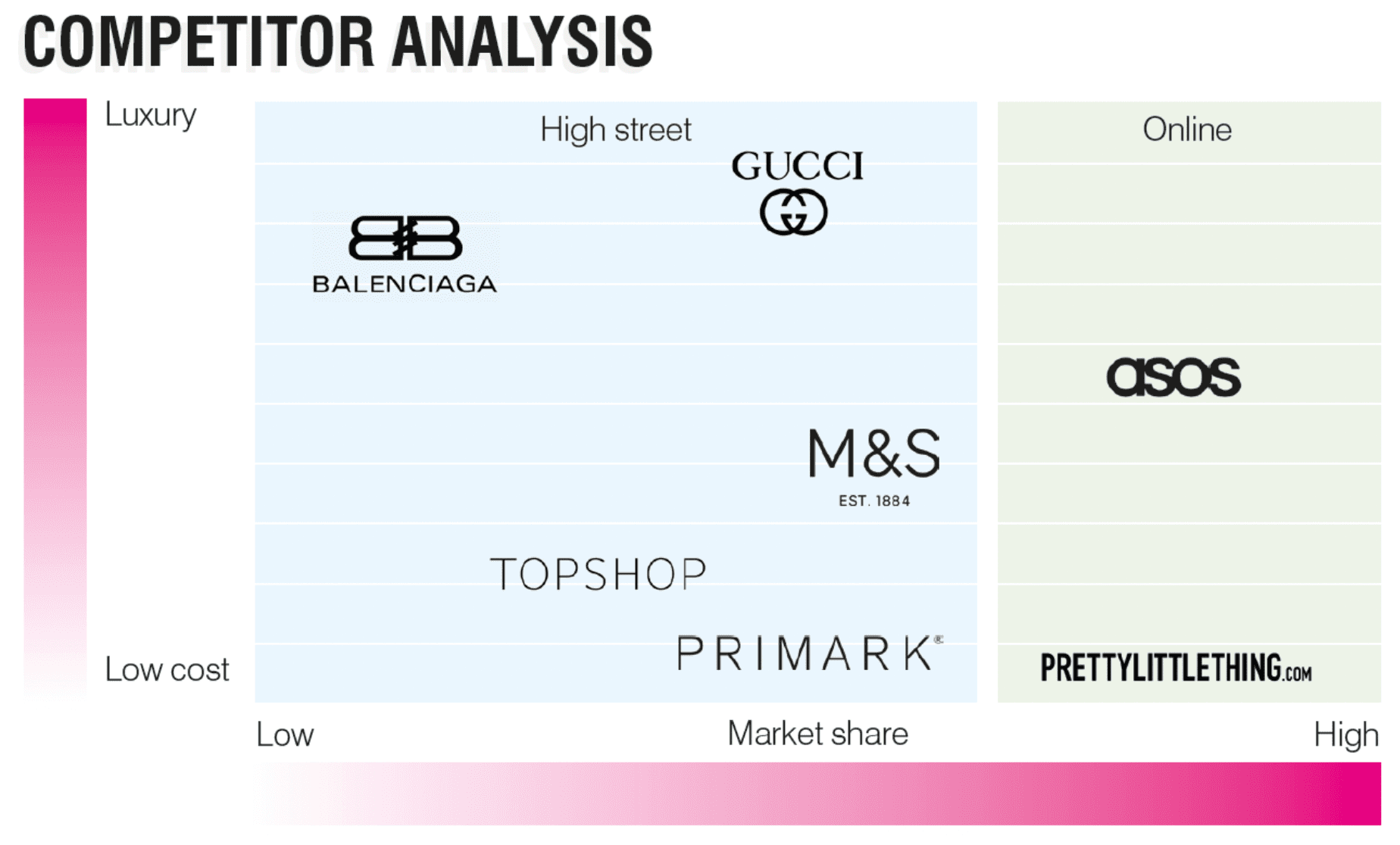A successful brand does not become successful by chance. It takes planning, a deep understanding of your market, defining your tone of voice and communicating your values – amongst other things.
In this blog post, I’m going to tackle just two of the many things that underpin a brand.
These strategies should and must be performed before beginning a wider branding process; that includes any naming or logo design.
These activities and the results they deliver are the principles that any brand is built on. Companies, especially new companies eager to launch, often overlook or simply don’t see the need to do this vital work. And it is vital.
Table of Contents
Brand Strategies
Let’s start with what a brand strategy entails.
Brand strategies are unique to the organisation they serve, no two are the same. In some respects, that is the whole point. They help define the company, service or product’s distinctive qualities.
So, to a certain extent, I will have to generalise and walk you through a typical process of delivering a brand strategy.
As with developing brand guidelines, a brand strategy is not something you do once. It needs to be revisited, refined and occasionally torn down and built from the ground up.
When Facebook came under the umbrella of Meta, a new overarching brand strategy would have been developed, and it will need to continue to develop.
Where to start…
Brand Positioning
The truth of the matter is the positioning process is probably the first step. I say ‘probably’ because it may not be applicable if the company is in the rare position of either being the only actor in a new sector or a company that already knows its position and that position hasn’t changed.
Knowing your position in a market, where you are or where you want to be, is the basis for establishing your brand values.
Those values, the position document form the basis of a brand strategy and those two documents will inform the wider creative brief.
How does a company go about understanding their position in the market?
The first step is to perform a comprehensive review of the current market. The aim is to identify every organisation in the sector against a matrix.

An extract from Know Your Onions: Corporate Identity showing the market positioning of Know Your Onions: Graphic Design
I mentioned above that these activities are unique to every organisation. So the matrices will change.
I’ll give you an example.
Competitor Analysis
Our imaginary client wants to launch a jewellery brand. The designs are their own but are not handmade, but they do use precious metals and stones.
The company, we’ll call them ‘Signature Design’, is entering a very crowded market. And the market has some very high-level players and a lot of low-level players.
The jewellery company Pandora is a case in point, it started as a family-run business selling charm bracelets (their unique proposition) and now it is a global company.
Signature Design would love to be in that position in 10 years time.

Competitor analysis showing luxury against low cost, market share both high street and online
Competitor analysis showing luxury against low cost, market share both high street and online
Pandora essentially resurrected a 70s passion for a charm bracelet and gave it a modern twist.
We don’t know what Signature Designs’ unique selling point is, because I made them up, but let’s assume they have one.
With a new company, or even when looking at an established company trying to reposition themselves (tricky that) defining how it fits in the market and if they can find a niche, will have a massive effect on the potential success of the company.
In our example, the matrix that might apply to our positioning could be:
- Cost
- Exclusivity
- Uniqueness
When we know where the competitors are, we can position Signature Designs in the market.
As we are dealing with a new company, we can focus our efforts on positioning the company where they want to be.
Boom.
Now we need to set about devising a strategy that brings together all the necessary components to get our new brand out there.
What Does a Brand Strategy Entail?
A brand strategy is an organisation-focused document that sets out the goals and processes a brand aims to take to achieve its aims.
These aims will differ depending on the organisation and the stage the company is at, for instance, a startup or a brand looking to move to the next stage of development.
To give you some examples of some of the questions a brand might ask itself before looking to put the strategies in place to answer those questions:
- How do we overcome the relationship damage from XYZ?
- We are looking to undertake a brand refresh to modernise our image, what processes do we need to take?
- We are introducing new products and services, how do we integrate these into our brand family?
- We are a new organisation with an industry-disrupting product. How do we tell our story?
- The market leader in our sector has an 85% market share. How do we increase our market share?
- Our customer feedback shows that their perception of our e-coms has little or no interest to them. What do we need to do to engage with our customers better?
I could write these questions all day long and you can see my examples are diverse and tangible.
When developing a brand strategy, the aim is to define issues and problems and put in strategies to overcome them.
I hope you can see that an article like this cannot give you a ‘template strategy document’, but it should give you some insights into what a strategy does.
Let’s set about trying to answer some of the questions our imaginary company is asking themselves. Bear in mind, for our imaginary company, we have no research or positioning, so my answers are based on past experience with previous clients. Here goes…
Questions a Brand Might Ask Itself Before Looking to Put the Strategies in Place
Question: How do we overcome the relationship damage from XYZ?
Answer: Set an online counter social media campaign to address the false and misleading claims perpetrated by XYZ. Produce focus articles, posts and responses to explain the true position. Define a reputation management strategy.
Question: We are looking to undertake a brand refresh to modernise our image, what processes do we need to take?
Answer: Define why we need to rebrand. Create a brief for a specialist branding agency and a delivery schedule. Perform an internal comms campaign to educate, gain buy-in and encourage input.
Question: We are introducing new products and services, how do we integrate these into our brand family?
Answer: Create a brand hierarchy and structure to define the sub-brand relationship. Consider unifying brand palettes and identities.
Question: We are a new organisation with an industry-disrupting product. How do we tell our story?
Answer: Define a tone of voice, mission, vision and descriptor. Make it market-focused and unique to our organisation.
Question: The market leader in our sector has 85% market share. How do we increase our market share?
Answer: Define our USP and communicate with our competitor’s audience. Look for low-cost, high-engagement channels to maximise our marketing budget.
Question: Our customer feedback shows that their perception of our e-comms has little or no interest to them. What do we need to do to engage with our customers better?
Answer: Ask our customers what they want to hear about. Test and track email open rates. Write client-focused content. Make CTAs less aggressive and more about starting a dialogue.
Conclusion
That was a fun bit of imaginary exploration for me. Whilst this process is important, it should be engaging, positive and energising.
I have focused on a comms-based approach to this article, but a strategy document should encompass a whole lot more.
A strategy document could contain internal comms, stakeholder comms and operational procedures.
An example of this might be defining the operational procedures; how the company operates, the price point and the way it delivers its services.
That is all too much for a blog article, but I think we are well on our way to understanding what positioning and strategy might mean for organisations.
Join The Logo Community
We hope you have found this article about Branding: Strategy and Positioning helpful. If you would like more personal tips, advice, insights, and access to our community threads and other goodies, join us in our community.
You can comment directly on posts, access our community threads, have a discussion and ask questions with our founder Andrew.
If you’re looking to learn more about brand strategy, we highly recommend eRESONAID with our friend and acclaimed brand strategist and author Fabian Geyrhalter, it’s packed full of knowledge and insights you will need to learn to become a brand strategist or apply what you learn within your own business.


Author Bio
Drew de Soto Director of Navig8 a design and market agency specialising in branding. Author of the Know Your Onions range of design-focused books.

